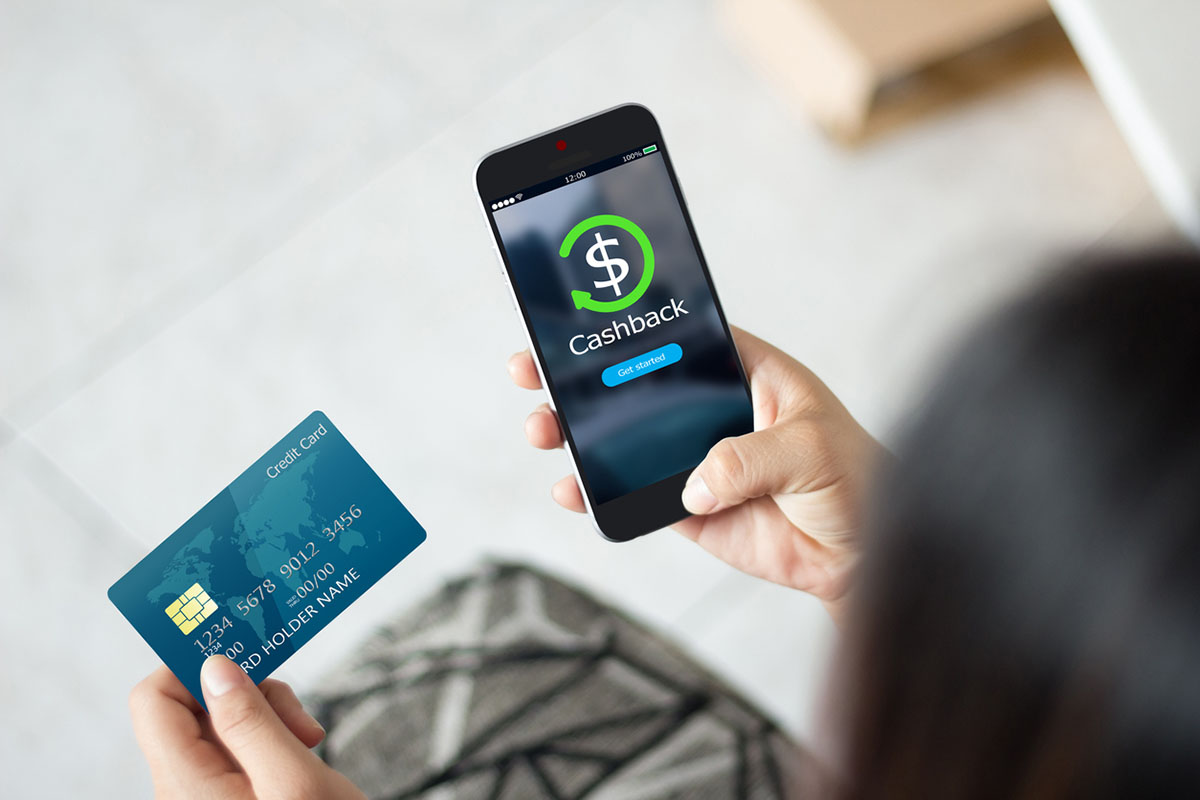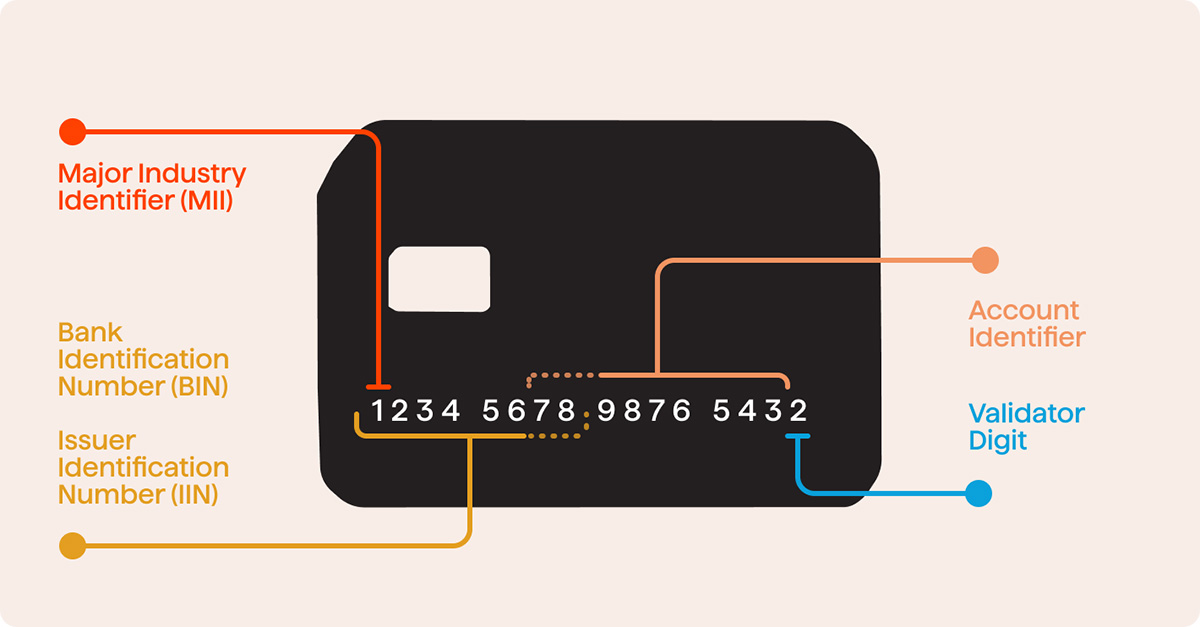Home>Finance>How Can My Business Set Up A Cashback Rewards Program?


Finance
How Can My Business Set Up A Cashback Rewards Program?
Published: February 29, 2024
Learn how to set up a cashback rewards program for your business and boost customer loyalty. Get expert finance tips and strategies today!
(Many of the links in this article redirect to a specific reviewed product. Your purchase of these products through affiliate links helps to generate commission for LiveWell, at no extra cost. Learn more)
Table of Contents
Introduction
In today's competitive business landscape, retaining customers and fostering brand loyalty is paramount. One effective strategy that businesses can employ to achieve these goals is the implementation of a cashback rewards program. This innovative approach not only entices customers to make repeat purchases but also cultivates a sense of appreciation and value, ultimately strengthening the bond between the consumer and the brand.
Cashback rewards programs have gained significant popularity in recent years, with both large corporations and small businesses leveraging this tactic to drive customer engagement and boost sales. By offering a percentage of the purchase amount back to the customer in the form of cash or rewards points, businesses can incentivize continued patronage and distinguish themselves in a crowded marketplace.
In this comprehensive guide, we will delve into the intricacies of cashback rewards programs, elucidate the manifold benefits they offer to businesses, and provide a step-by-step blueprint for setting up and optimizing a successful cashback rewards program. Whether you are a burgeoning entrepreneur or a seasoned business owner, understanding the nuances of cashback rewards programs and harnessing their potential can significantly elevate your brand's appeal and bottom line.
Throughout this exploration, we will navigate the process of selecting the right cashback rewards program provider, devising effective promotional strategies, and implementing robust monitoring and evaluation mechanisms. By the end of this journey, you will be equipped with the knowledge and insights necessary to embark on the rewarding endeavor of establishing a compelling cashback rewards program for your business. Let's embark on this enlightening expedition into the realm of customer retention and loyalty enhancement through cashback rewards programs.
Understanding Cashback Rewards Programs
Cashback rewards programs are a type of incentive program offered by businesses to reward customers for making purchases. The concept is straightforward: customers receive a percentage of the purchase amount back in the form of cash or rewards points. This percentage can vary depending on the business and the specific promotion, but it typically ranges from 1% to 5% of the total purchase value.
These programs are designed to create a mutually beneficial relationship between the business and its customers. Customers are incentivized to make repeat purchases in order to accumulate more cashback rewards, while businesses benefit from increased customer loyalty and higher retention rates. The allure of receiving a tangible benefit from their purchases encourages customers to choose a particular business over its competitors.
From the customer’s perspective, cashback rewards offer a sense of immediate gratification and value. Unlike traditional discounts or coupons, which provide savings on future purchases, cashback rewards put money directly back into the customer’s pocket, providing a tangible benefit for their loyalty. This can lead to increased customer satisfaction and a positive association with the business, ultimately fostering long-term loyalty.
For businesses, cashback rewards programs serve as a powerful tool for customer retention and acquisition. By offering a compelling incentive for customers to return, businesses can increase the lifetime value of each customer and drive repeat sales. Additionally, these programs can help businesses stand out in a crowded marketplace, as customers are more likely to choose a business that offers cashback rewards over one that does not.
Overall, understanding the dynamics of cashback rewards programs is essential for businesses looking to enhance customer loyalty and drive sustainable growth. By grasping the underlying principles and benefits of these programs, businesses can strategically implement and optimize cashback rewards to create a win-win scenario for both their customers and their bottom line.
Benefits of Cashback Rewards Programs for Businesses
Cashback rewards programs offer a myriad of advantages for businesses seeking to bolster customer loyalty and increase sales. By implementing these programs, businesses can unlock a host of benefits that contribute to long-term success and sustainable growth.
- Enhanced Customer Loyalty: Cashback rewards programs foster a sense of appreciation and value among customers, leading to increased loyalty and repeat purchases. Customers are more likely to return to a business that offers cashback rewards, thus solidifying long-term relationships and reducing customer churn.
- Increased Customer Retention: By incentivizing customers to continue patronizing their business in order to earn cashback rewards, companies can significantly improve customer retention rates. This leads to a more stable and predictable revenue stream, as well as reduced reliance on acquiring new customers.
- Competitive Advantage: Offering cashback rewards sets businesses apart from competitors and provides a compelling reason for customers to choose their products or services over alternatives. This competitive edge can be instrumental in capturing market share and sustaining a strong brand presence.
- Data Insights: Cashback rewards programs provide valuable data on customer spending habits, preferences, and purchase frequency. Businesses can leverage this data to gain insights into consumer behavior, refine their marketing strategies, and tailor their offerings to better meet customer needs.
- Positive Brand Perception: Providing cashback rewards creates a positive brand perception, as customers perceive the business as generous and customer-centric. This favorable association can lead to word-of-mouth referrals and positive reviews, further enhancing the brand’s reputation.
- Upselling and Cross-Selling Opportunities: Cashback rewards programs can be leveraged to promote upselling and cross-selling initiatives. Businesses can incentivize customers to explore additional products or services in exchange for increased cashback rewards, thereby boosting overall sales and average transaction value.
By harnessing the power of cashback rewards programs, businesses can cultivate a loyal customer base, gain a competitive edge, and glean valuable insights into consumer behavior. These programs not only benefit the bottom line but also contribute to a positive brand image and sustained growth in the long run.
Steps to Set Up a Cashback Rewards Program
Implementing a successful cashback rewards program requires careful planning and strategic execution. By following a structured approach, businesses can create a compelling program that resonates with customers and drives meaningful results. The following steps outline the process of setting up a cashback rewards program:
- Define Program Objectives: Clearly outline the goals of the cashback rewards program. Whether the aim is to increase customer retention, drive repeat purchases, or gather valuable customer data, establishing specific objectives is crucial for designing a program that aligns with the business’s overarching strategy.
- Select a Reward Structure: Determine the type of rewards to offer, whether in the form of cash back, points, or other incentives. Consider the percentage of the purchase amount to be rewarded and the redemption options available to customers. The reward structure should be enticing and straightforward for customers to understand.
- Choose Redemption Options: Decide on the redemption options for customers to access their cashback rewards. This can include options such as direct cash back, gift cards, discounts on future purchases, or charitable donations. Offering diverse redemption choices enhances the appeal of the program.
- Set Program Terms and Conditions: Establish clear terms and conditions for the cashback rewards program, including eligibility criteria, reward expiration policies, and any limitations on reward accumulation and redemption. Transparency and fairness in the program’s terms are essential for building trust with customers.
- Integrate with Point-of-Sale Systems: Ensure that the cashback rewards program is seamlessly integrated with the business’s point-of-sale systems or e-commerce platforms. This integration is vital for accurately tracking customer purchases and disbursing rewards in a timely manner.
- Promote the Program: Develop a comprehensive marketing and communication strategy to promote the cashback rewards program to existing and potential customers. Utilize various channels, such as email marketing, social media, and in-store signage, to create awareness and generate excitement about the program.
- Educate and Train Staff: Provide training to employees on the details of the cashback rewards program, including how it works, its benefits, and how to address customer inquiries related to the program. Well-informed staff can effectively communicate the value of the program to customers.
- Monitor and Refine: Continuously monitor the performance of the cashback rewards program and gather feedback from customers. Analyze key metrics, such as redemption rates and customer engagement, and make adjustments as needed to optimize the program’s effectiveness over time.
By following these steps, businesses can establish a robust and appealing cashback rewards program that resonates with customers, drives loyalty, and contributes to the overall success of the business.
Choosing the Right Cashback Rewards Program Provider
When embarking on the journey of implementing a cashback rewards program, selecting the right program provider is a critical decision that can significantly impact the program’s success. Several key factors should be considered when evaluating potential providers to ensure that the chosen program aligns with the business’s objectives and resonates with its customer base.
- Customization and Flexibility: Look for a provider that offers customizable solutions to tailor the cashback rewards program to the specific needs and branding of the business. Flexibility in reward structures, redemption options, and program terms is essential to create a program that reflects the business’s unique identity and resonates with its customer base.
- Integration Capabilities: Assess the provider’s ability to seamlessly integrate the cashback rewards program with the business’s existing systems, including point-of-sale platforms, e-commerce websites, and customer relationship management (CRM) tools. A smooth integration ensures accurate tracking of customer transactions and streamlined reward disbursement.
- Customer Support and Training: Evaluate the level of customer support and training offered by the provider. Access to responsive support services and comprehensive training resources for both business owners and staff members is crucial for effectively managing and promoting the cashback rewards program.
- Reporting and Analytics: Seek a provider that offers robust reporting and analytics capabilities to track the performance of the cashback rewards program. Detailed insights into customer engagement, redemption trends, and program effectiveness enable businesses to make data-driven decisions and optimize the program for maximum impact.
- Compliance and Security: Prioritize providers that adhere to industry standards and best practices for data security and compliance. Protecting customer information and ensuring the secure handling of transactions are paramount considerations when entrusting a provider with the management of a cashback rewards program.
- Scalability and Future Growth: Consider the scalability of the provider’s offerings and its ability to support the business’s growth trajectory. A provider that can accommodate the evolving needs of the business and scale the cashback rewards program as it expands is essential for long-term partnership viability.
By carefully evaluating potential cashback rewards program providers based on these criteria, businesses can make an informed decision that aligns with their strategic objectives and sets the stage for a successful and impactful program implementation.
Promoting Your Cashback Rewards Program
Effective promotion is essential to ensure the success and widespread adoption of a cashback rewards program. By implementing a comprehensive marketing strategy, businesses can generate awareness, drive customer engagement, and maximize the impact of the program. The following tactics can be employed to promote a cashback rewards program and encourage customer participation:
- Multi-Channel Marketing: Utilize a multi-channel approach to reach customers across various touchpoints. Leverage email marketing, social media platforms, in-store signage, and the business’s website to communicate the value of the cashback rewards program and encourage enrollment.
- Compelling Messaging: Craft compelling and clear messaging that highlights the benefits of the cashback rewards program. Emphasize the value proposition for customers, such as earning cash back on every purchase, and communicate the simplicity of participating in the program.
- Launch Incentives: Offer launch incentives to incentivize early adoption of the cashback rewards program. This can include limited-time bonus rewards, exclusive offers for program members, or entry into a sweepstake for new enrollees.
- Employee Advocacy: Engage employees as advocates for the cashback rewards program. Educate and empower staff to communicate the program’s benefits to customers, answer inquiries, and actively promote enrollment at the point of sale.
- Customer Education: Provide clear and accessible information about the cashback rewards program to customers. This can be achieved through in-store materials, website content, and targeted communications that explain how the program works and the benefits of participation.
- Referral Programs: Implement a referral program that rewards existing participants for referring new customers to the cashback rewards program. Incentivizing word-of-mouth promotion can help expand program membership and drive customer acquisition.
- Seasonal Promotions: Introduce seasonal promotions and themed campaigns to create excitement and drive participation in the cashback rewards program. Capitalize on holidays, special events, or key shopping seasons to offer enhanced rewards and attract customer attention.
By leveraging these promotional strategies, businesses can effectively communicate the value of the cashback rewards program, drive enrollment, and foster ongoing engagement among participants. A well-executed promotion plan can elevate the program’s visibility and impact, ultimately contributing to enhanced customer loyalty and increased sales.
Monitoring and Evaluating Your Cashback Rewards Program
Once a cashback rewards program is launched, it is essential for businesses to actively monitor its performance and evaluate its impact on customer engagement and sales. By implementing robust monitoring and evaluation processes, businesses can gain valuable insights, identify areas for improvement, and optimize the program to maximize its effectiveness. The following steps outline key considerations for monitoring and evaluating a cashback rewards program:
- Track Key Performance Indicators (KPIs): Define and track relevant KPIs to gauge the program’s performance. These may include customer enrollment rates, redemption frequency, average reward value, and overall impact on sales and customer retention.
- Customer Feedback and Surveys: Gather feedback from program participants through surveys and direct interactions. Understanding customer perceptions, preferences, and satisfaction with the program can provide valuable insights for refinement.
- Redemption Analysis: Analyze redemption patterns to identify popular reward options, frequency of redemption, and any trends that may indicate changing customer preferences or behavior.
- Comparative Analysis: Compare the performance of the cashback rewards program across different customer segments, product categories, or time periods to identify areas of strength and opportunities for enhancement.
- Financial Impact Assessment: Evaluate the financial impact of the program by assessing its contribution to overall sales, customer lifetime value, and return on investment. Understanding the program’s financial implications is crucial for assessing its long-term viability.
- Operational Efficiency: Assess the operational efficiency of the program, including the ease of reward redemption, accuracy of reward disbursement, and any administrative overhead associated with program management.
- Adaptation and Optimization: Use the insights gathered from monitoring and evaluation to adapt and optimize the cashback rewards program. This may involve adjusting reward structures, introducing new redemption options, or refining promotional strategies based on performance data.
- Long-Term Sustainability: Consider the long-term sustainability of the program and its ability to evolve alongside changing customer expectations and market dynamics. Continuously evaluate the program’s relevance and alignment with business objectives.
By diligently monitoring and evaluating the cashback rewards program, businesses can refine its mechanics, enhance customer satisfaction, and drive sustainable value for both the business and its loyal customer base. This iterative approach to program management ensures that the cashback rewards program remains a compelling and impactful initiative that contributes to the business’s overall success.














